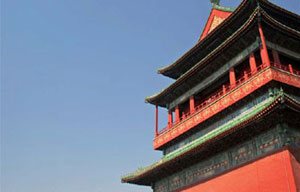Up close, asteroid resembles planet
Updated: 2011-10-29 08:11
By Annie Hautefeuille and Richard Ingham (China Daily)
|
|||||||||
Potato-shaped rock 121 km long
PARIS - A rare opportunity to observe an asteroid at close quarters has unveiled a remarkable rock that seems to be a precursor of a planet, astronomers reported on Thursday.
"This is the first object of this kind we have ever seen," Stephane Erard of the Paris Observatory told AFP.
"For virtually the first time, we have found a witness to the formation of the planets."
Three analyses, published in the US journal Science, describe the outcome of a flyby last year of a large, potato-shaped asteroid, 21 Lutetia, by Europe's comet-chasing probe, Rosetta.
The scout turned an array of cameras, thermal and spectroscopic sensors on Lutetia as it raced through the asteroid belt between Mars and Jupiter.
The astronomers calculate Lutetia to be 121 kilometers long, 101 km tall and 75 km wide.
It has a complex surface, pocked by craters in many areas, including one that measures 55 km across.
It also has shafts, crests and escarpments as well as smooth, younger-looking plains.
There seems to be no evidence of ice or water processes, which implies that at one point the rock had been heated, nor is there any sign of "weathering" in the harsh environment of space.
Its tip is covered by a thick layer of dust known as regolith, which flows across the surface in landslides as the rock slowly twists in space.
Lutetia's high density, at 3,400 kg for each cubic meter, its large size and its ancient surface make it different from any other asteroid studied so far, the studies said.
Erard, in charge of spectroscopic analysis and co-author of one of the papers, said it was likely to be a planetesimal - a fragment of the material that clumped together to make planets at the birth of the Solar System nearly four billion years ago.
"We believe that Lutetia is not debris resulting from a collision. Instead, it's probably one of the holdouts of the (Solar System's) primitive population."
Planetesimals are defined as rocks that, after clumping together grains of cosmic dust, become big enough to generate a gravitational field of their own.
This attracts other bodies, eventually forming proto-planets, or the planetary embryos.
Planetismals that failed to become planets were left to wander in orbit, according to this theory.
Over the aeons, they collided and shattered into smaller asteroids, of which there are many millions.
As a result, there are relatively few planetesimals left, said Erard.
Scientists are excited by planetesimals because beneath their radiation-battered exterior could be pristine material that gives clues to how the planets were formed.
Rosetta, a 1-billion-euro ($1.4 billion) unmanned probe launched in 2004, came within 3,170 km of Lutetia on July 20, 2014. The explorer is designed to meet up with Comet 67/P Churyumov-Gerasimenko in 2014, 675 million km from home.
Agence France-Presse
(China Daily 10/29/2011 page6)











